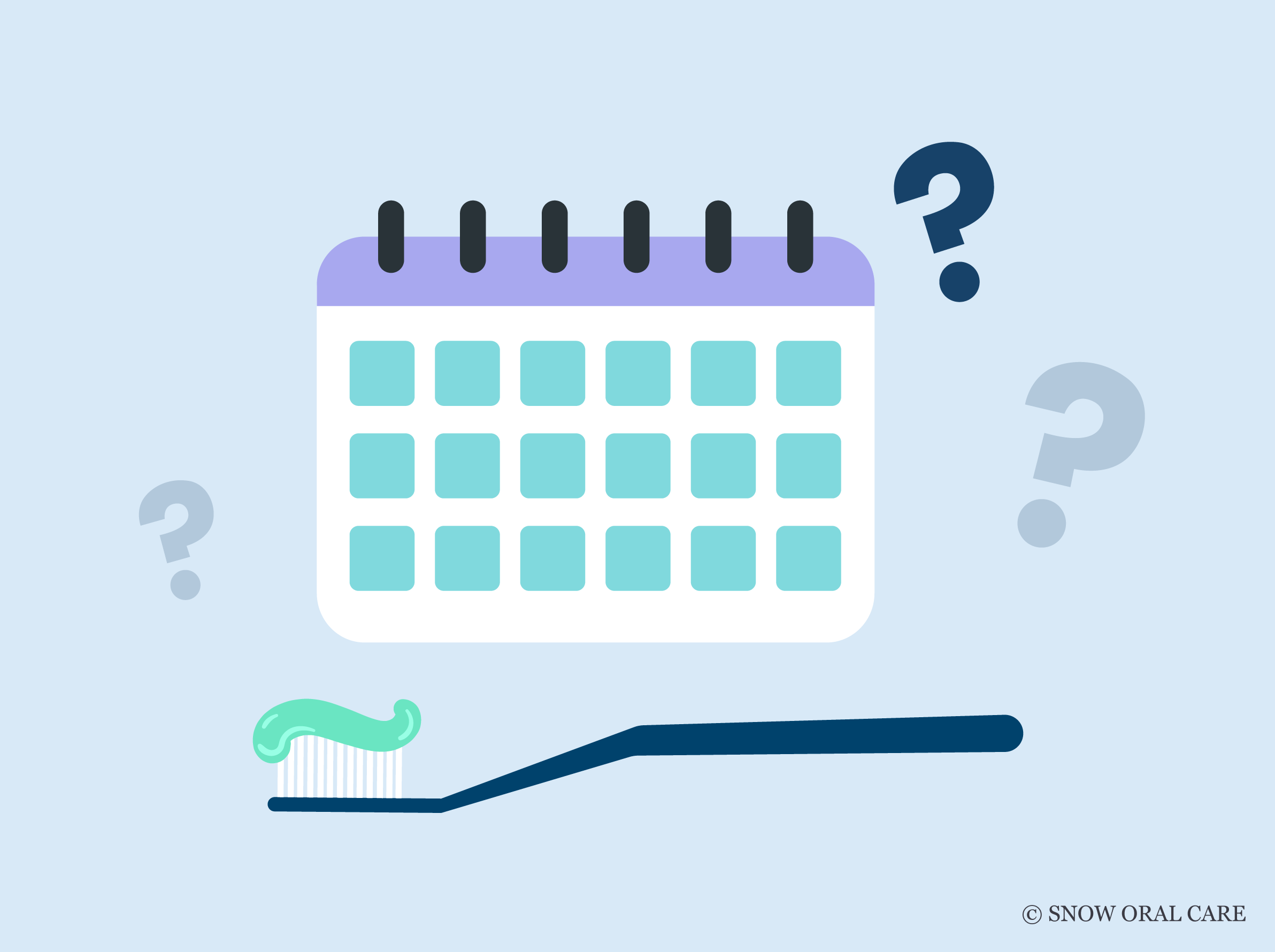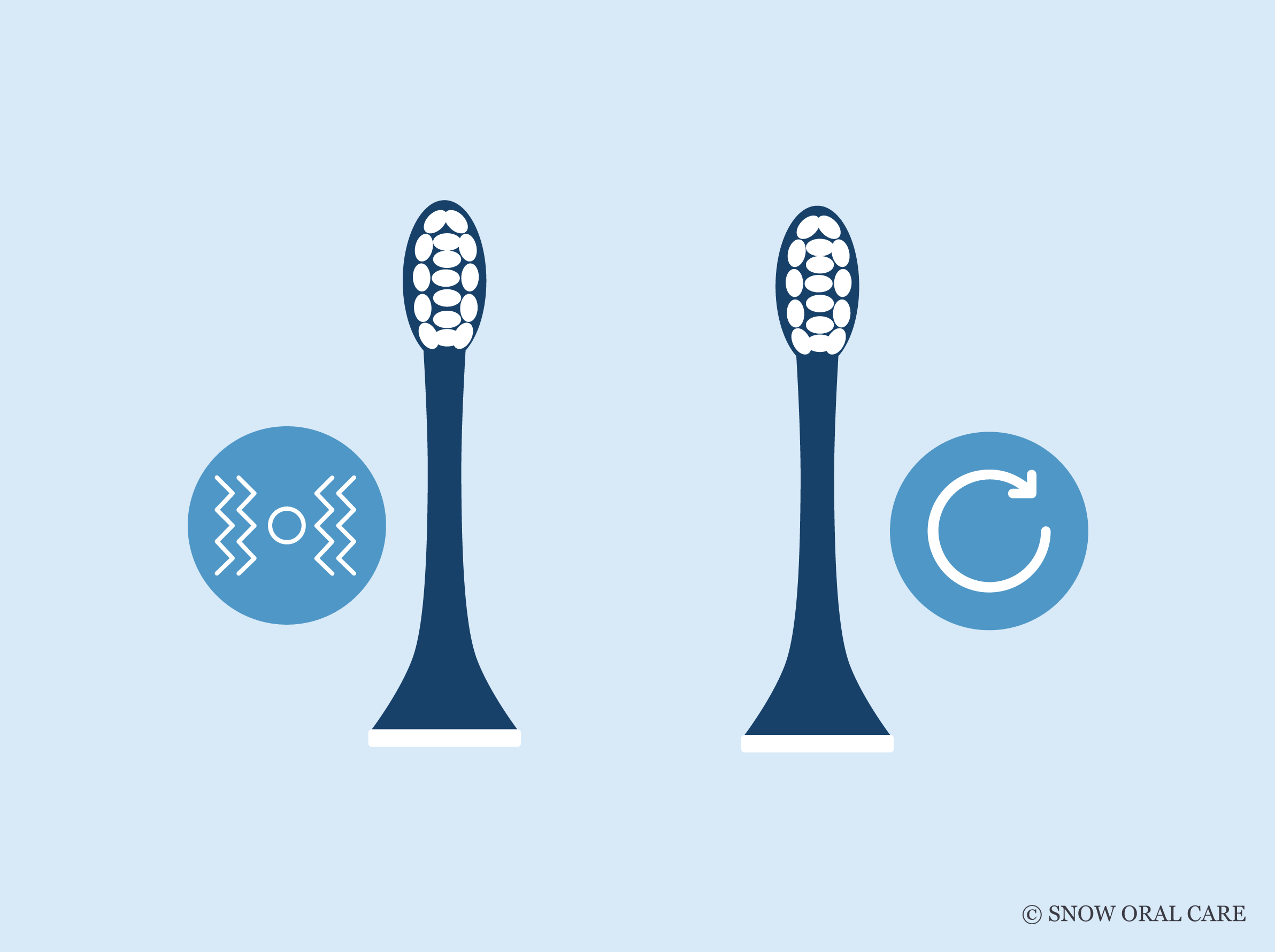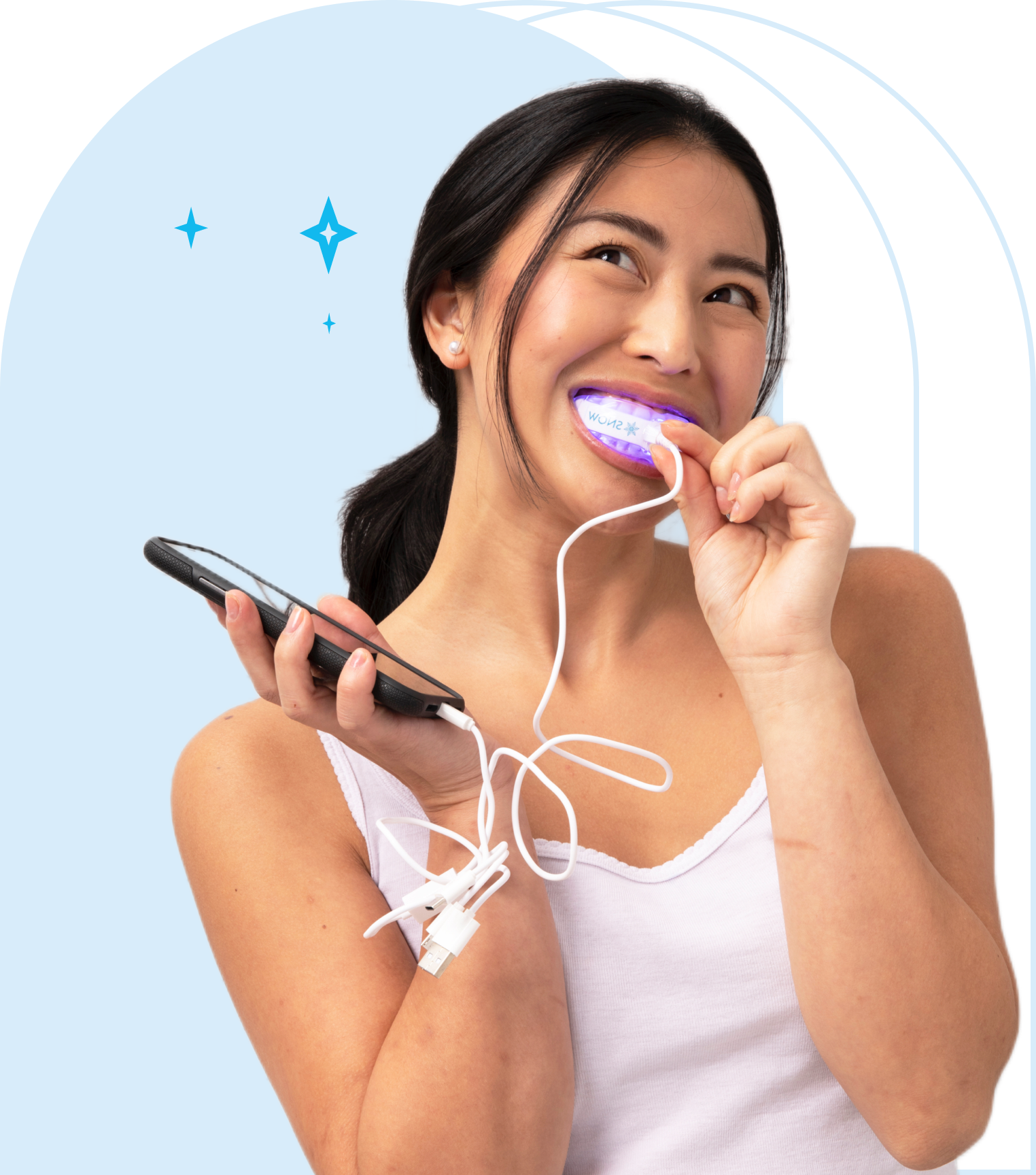Not sure whether to use a soft or medium toothbrush? It’s a small choice — but one that can have a big impact on your teeth and gums. Choosing the right bristle type affects how well you remove plaque, prevent gum irritation, and maintain long-term oral health. In this article, we’ll break down the key differences between soft and medium toothbrushes so you can make the best decision for your smile — whether you're dealing with sensitivity, gum concerns, or just want a better clean.
Key Takeaways
-
Soft-bristled toothbrushes are recommended for individuals with sensitive gums and teeth, as they minimize irritation while effectively preserving enamel integrity.
-
Medium-bristled toothbrushes offer increased plaque removal efficiency but require careful pressure control to avoid gum damage and enamel erosion. Studies have shown that medium toothbrushes are more effective than soft toothbrushes in reducing plaque index and gingival index scores.
-
Dental professionals emphasize the importance of selecting the appropriate toothbrush type (soft, medium, or hard) based on individual dental health needs, including sensitivity and plaque removal requirements.
Understanding Toothbrush Bristle Types
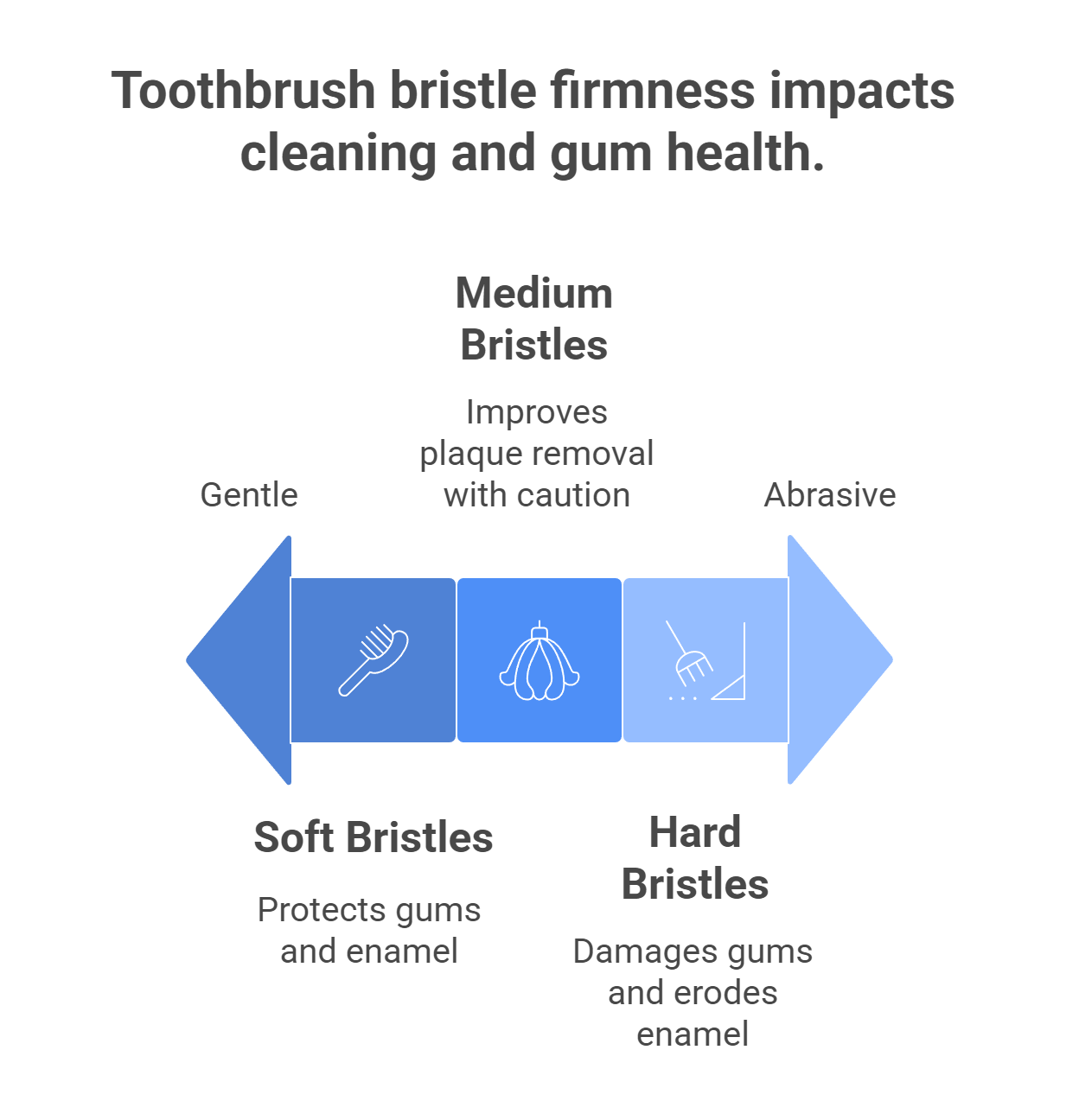
Toothbrush bristles are generally classified into three types based on firmness: soft, medium, and hard. The type you choose can significantly affect both how well your teeth are cleaned and how your gums are treated during brushing.
Soft Bristle Toothbrushes
Soft bristles are flexible and gentle, making them ideal for protecting natural teeth and sensitive gum tissue. They are often recommended by dentists because:
-
They minimize gum recession and irritation
-
They reduce the risk of enamel erosion
-
They are safe for daily use, especially for people with gum sensitivity or exposed roots
A soft bristle toothbrush is generally the preferred choice for maintaining oral health without causing damage — particularly for those with sensitive gums or natural enamel surfaces.
Medium Bristle Toothbrushes
Medium toothbrushes have stiffer bristles and offer greater mechanical force, which can:
-
Improve plaque removal
-
Deliver a more intense clean
-
Be helpful for people with healthy, resilient gums
However, medium bristles can pose a risk if used with too much pressure. They may be suitable for users focused on deeper cleaning, as long as brushing technique is gentle and controlled.
Hard Bristle Toothbrushes
Hard bristles are generally discouraged by dental professionals. Though they offer strong scrubbing power, they can:
-
Damage gum tissue
-
Erode tooth enamel
-
Lead to gum recession and sensitivity
Due to these risks, hard toothbrushes are rarely recommended, especially for people with natural teeth or pre-existing gum concerns.
Why Bristle Type Matters
Selecting the right bristle type is essential for maintaining long-term oral health. While soft bristles are safer and more universally recommended, medium bristles may suit certain users who are able to brush gently and have no existing sensitivity. In contrast, hard bristles should be avoided due to their potential for long-term harm.
For those with sensitive gums or natural teeth, choosing a soft toothbrush is especially important to prevent injury and preserve enamel.
Benefits of Soft-Bristled Toothbrushes
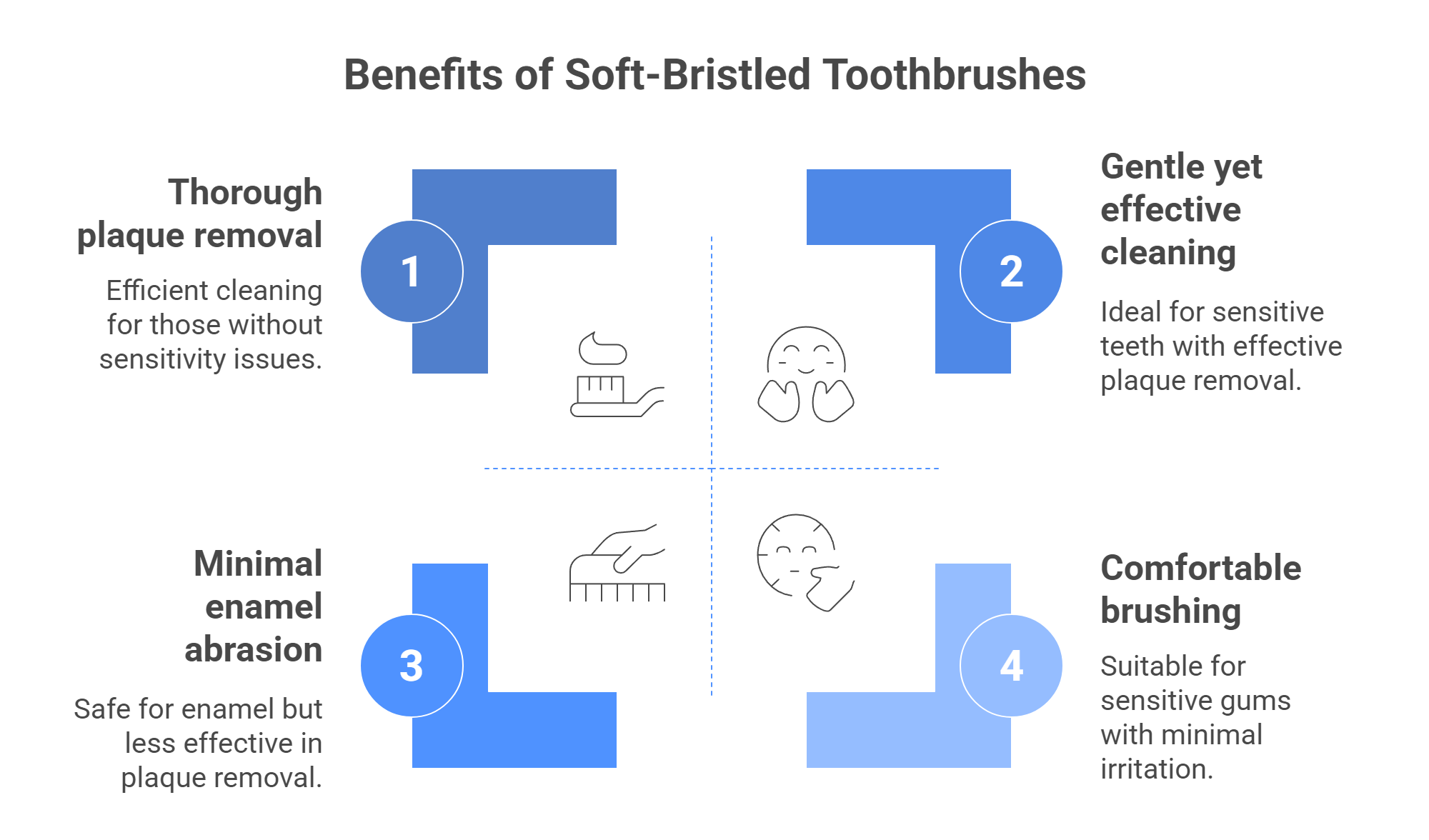
Soft-bristled toothbrushes are widely recommended by dental professionals for their gentle yet effective cleaning abilities — especially for those with sensitive teeth, gum disease, or orthodontic appliances. They’re designed to clean thoroughly while minimizing harm to teeth and gums.
Why Choose a Soft-Bristled Toothbrush?
-
Gentle on enamel: Soft bristles cause minimal abrasion, helping preserve enamel integrity and reduce the risk of enamel erosion over time.
-
Comfortable cleaning: The bristles flex easily against tooth surfaces and gum lines, making them ideal for those with gum sensitivity or discomfort.
-
Effective without irritation: Despite their softness, these brushes can still remove plaque and food debris efficiently without damaging soft tissue.
-
Recommended by experts: Both dental professionals and the American Dental Association (ADA) recommend soft-bristled toothbrushes for daily use.
-
ADA guidance: The ADA also recommends brushing for two minutes per session with soft bristles to achieve optimal oral hygiene.
Ideal for Special Oral Health Needs
Soft toothbrushes are especially beneficial for people with:
-
Sensitive teeth or gums
-
Receding gums
-
Periodontal issues
-
Braces or other orthodontic appliances
-
Recent dental work (like surgery or fillings)
For individuals with more severe gum sensitivity or advanced gum disease, an extra-soft toothbrush offers even more protection and comfort.
Targeted Cleaning with Proper Technique
When paired with proper brushing technique, soft bristles can:
-
Reach along the gum line and between teeth
-
Provide a thorough clean without contributing to gum recession or enamel wear
-
Maintain healthy teeth and gums over time — especially with consistent, gentle brushing
Drawbacks of Soft-Bristled Toothbrushes
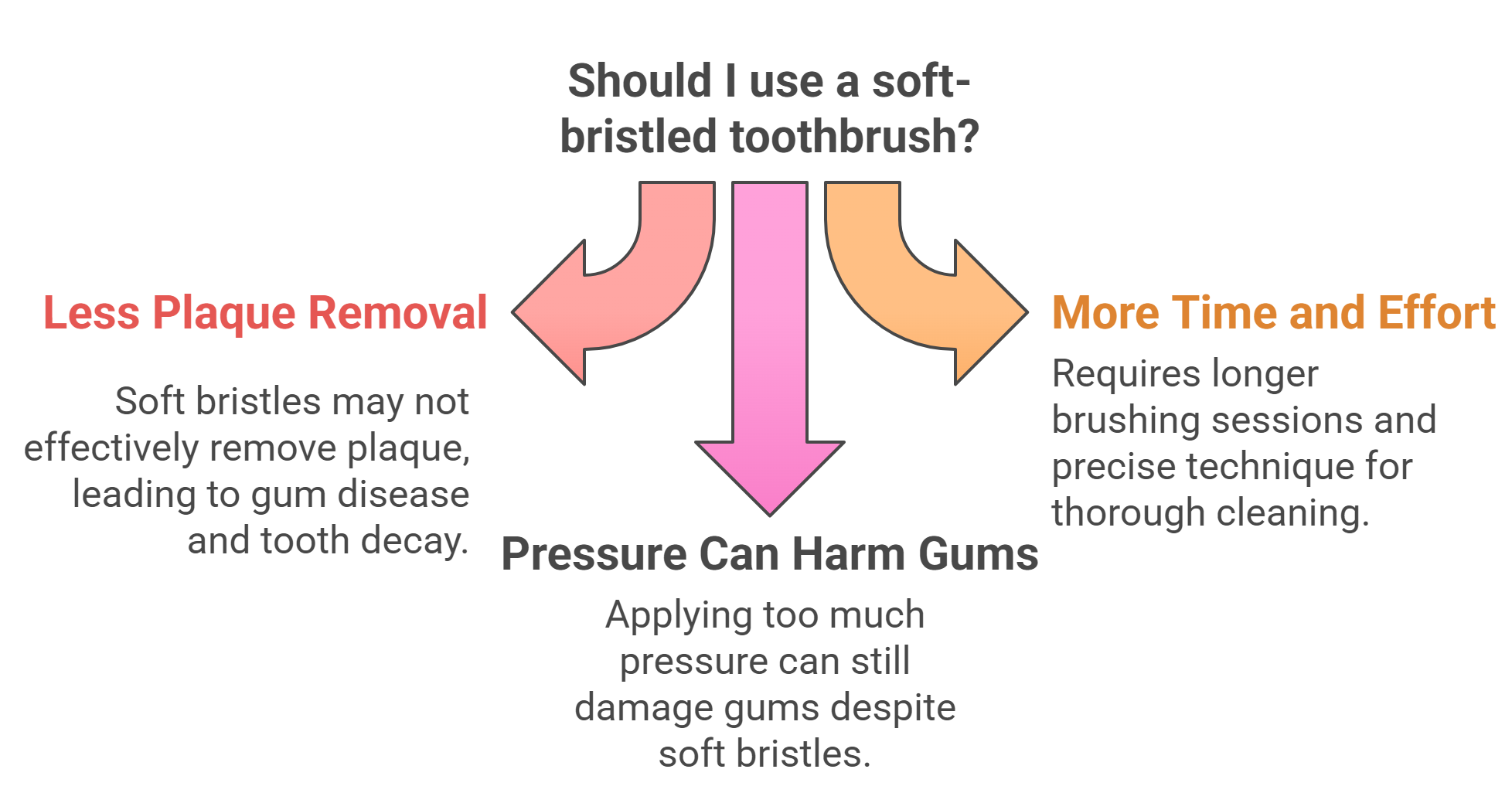
While soft-bristled toothbrushes are often recommended for their gentle cleaning action, they do come with some limitations — especially for individuals with specific oral care needs.
1. May Remove Less Plaque Than Medium Bristles
One common concern is that soft bristles may not remove plaque as effectively as medium-bristled brushes. Some users report that soft brushes feel too gentle, especially when trying to control early gum disease (gingivitis) or clean hard-to-reach areas.
If plaque isn't thoroughly removed, it can lead to:
-
Gingivitis or gum inflammation
-
Tooth decay due to lingering food particles and bacteria
-
A feeling of incomplete cleanliness, especially for those who consume sticky or sugary foods regularly
2. May Require More Time and Effort
Because soft bristles are more flexible, they sometimes require:
-
Longer brushing sessions
-
More precise technique to clean thoroughly
-
Extra attention to plaque-prone areas like back molars or the gumline
For users who prefer a firmer brushing sensation, soft bristles might feel less satisfying or effective — even if they are technically doing the job.
3. Technique Still Matters — Pressure Can Harm Gums
While soft bristles are designed to protect enamel and gums, they can still cause damage if:
-
Too much pressure is applied during brushing
-
Brushing is done with an aggressive back-and-forth motion
Benefits of Medium-Bristled Toothbrushes
Medium-bristled toothbrushes are known for their effectiveness in removing stubborn plaque and surface stains due to their increased mechanical force. They offer a compromise between plaque removal efficiency and gentleness on gums, making them suitable for individuals with robust gingival health and minimal sensitivity. Bristle toothbrushes are a popular choice for many users.
Medium bristles offer more vigorous stain removal for those who can control brushing force, enhancing the cleaning experience. The force applied during brushing with a medium toothbrush is a key factor in balancing effective plaque removal and gum safety. They are particularly beneficial for individuals who have strong dental health and can brush with controlled, light pressure to avoid adverse effects. A medium brush with medium bristles can dislodge plaque more effectively, contributing to cleaner teeth and healthier gums, whether the brushing is medium or hard.
Medium-bristled toothbrushes suit those who can apply gentle pressure while brushing with a soft brush. This balance allows for effective plaque removal without compromising gum health, provided the proper brushing technique is employed with a medium toothbrush bristles.
Drawbacks of Medium-Bristled Toothbrushes
Medium-bristled toothbrushes offer an effective middle ground between gentle and aggressive brushing. With increased mechanical force, they can remove stubborn plaque and surface stains more efficiently than soft brushes — making them a popular choice for those with healthy gums and minimal sensitivity.
Why Choose a Medium-Bristled Toothbrush?
-
Stronger plaque removal: The firmer bristles help dislodge plaque and debris from tooth surfaces more effectively, especially in harder-to-clean areas.
-
Better stain removal: Medium bristles provide more friction, helping remove surface stains caused by coffee, wine, or tobacco.
-
A balanced approach: Medium toothbrushes offer a compromise between cleaning power and gum safety — ideal for people who can brush with light, controlled pressure.
Best for Individuals With:
-
Strong, healthy gums
-
Minimal tooth sensitivity
-
A desire for a more vigorous clean without switching to harsh or abrasive tools
The brushing technique is key. Medium bristles are effective only when used with proper, gentle pressure. Aggressive brushing can still damage enamel or cause gum recession — regardless of bristle type.
Medium-bristled toothbrushes work best for those who want a deeper clean but can handle the extra firmness without irritating their gums. With the right technique, they offer a powerful yet balanced option for plaque and stain removal.
Hard Bristled Toothbrush Alternatives
If you’ve been using a hard bristled toothbrush, it’s time to consider alternatives that are safer for your teeth and gums. Dental professionals and the American Dental Association generally recommend switching to a soft bristled toothbrush to protect tooth enamel and prevent gum damage. Soft bristles are gentle on sensitive teeth and gums, reducing the risk of gum recession, tooth abrasion, and enamel erosion that can result from too much pressure or harsh brushing.
Soft bristled toothbrushes, including extra soft options, are designed to clean tooth surfaces effectively while minimizing irritation. They’re especially beneficial for individuals with sensitive teeth, gum disease, or a history of gum recession. Electric toothbrushes with soft bristles are another excellent alternative, offering effective plaque removal with less effort and helping to maintain good dental health. Many electric toothbrushes feature angled bristles, which can reach between teeth and along the gum line for thorough cleaning and improved oral hygiene.
Professional Recommendations for Toothbrush Selection
Dental experts generally recommend soft-bristled toothbrushes for most patients because of their gentle cleaning properties. Dental professionals consider patient needs and clinical studies when making recommendations to ensure optimal oral health outcomes.
For those with conditions like gum disease, soft bristles minimize irritation and promote healing. Soft toothbrushes are universally recommended for their ability to clean effectively without causing harm to the gums and enamel, contributing to good dental health.
However, some patients with strong dental health might benefit from medium bristles for a more effective cleaning experience.
Many patients with limited dexterity or specific oral health needs may benefit from alternative options such as electric brushes, which can provide superior plaque removal and ease of use.
Dentists emphasize proper brushing techniques to prevent damage from medium bristles, especially for hard brushers. Medium bristle toothbrushes are not generally recommended by dental professionals, as they can pose risks if not used with controlled pressure. Dental professionals recommend using medium bristles only for individuals who can control brushing force and need extra mechanical action for plaque removal.
Consulting a dentist or dental professional or dental hygienist for personalized recommendations based on specific oral health needs is essential.
Factors such as gum sensitivity, overall dental health, and brushing habits should be considered when selecting a toothbrush. The best way to choose the right toothbrush for you is to ask your dentist or hygienist next time you have a dental appointment. Following professional advice ensures the use of the most suitable toothbrush for individual dental hygiene needs.
How to Choose the Right Toothbrush for Your Needs
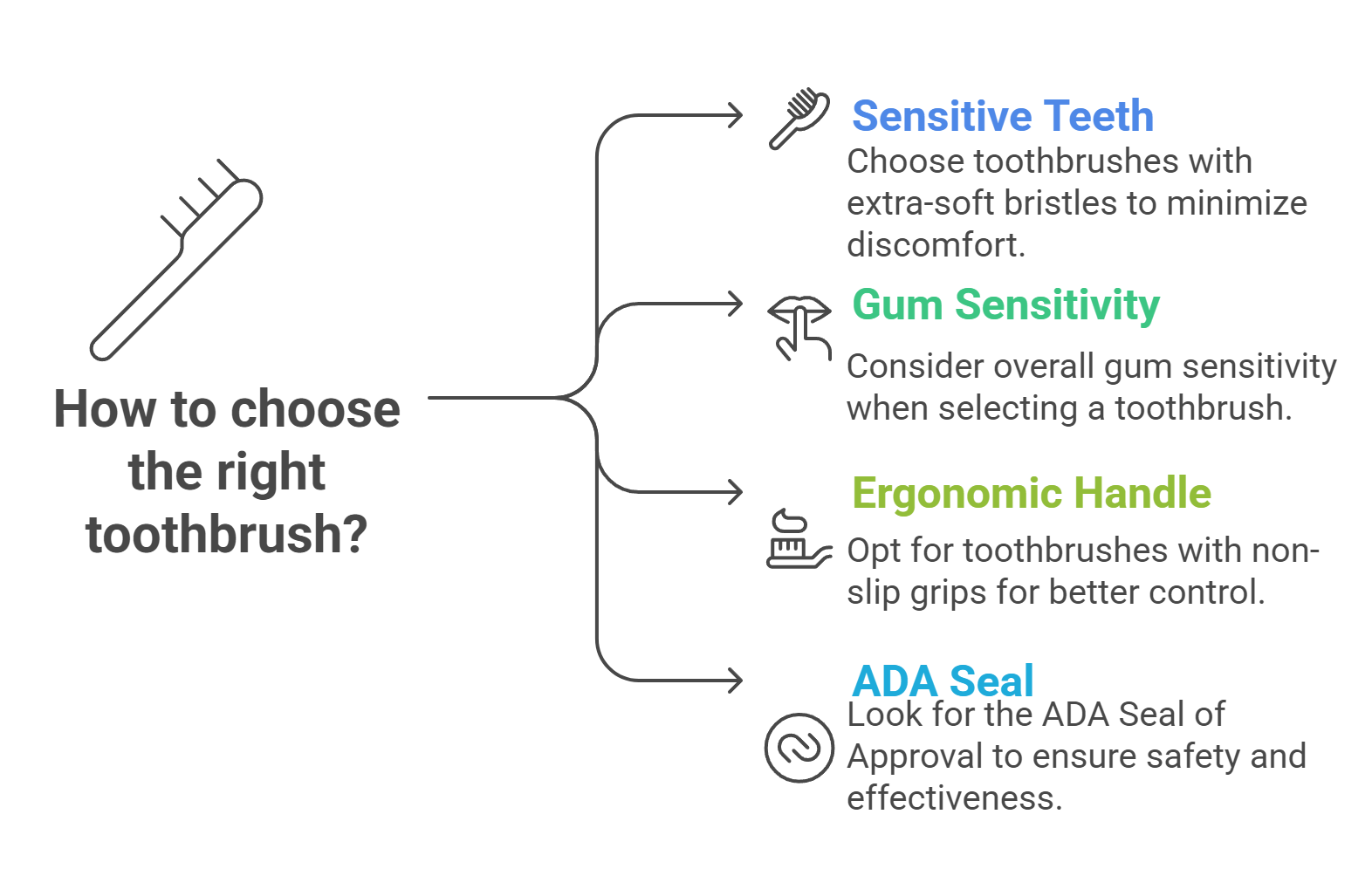
Selecting the right toothbrush involves assessing dental health needs, such as gum sensitivity and the choice between manual or electric toothbrush brushes. Consider the following factors:
-
For individuals with sensitive teeth, look for toothbrushes designed with extra-soft bristles.
-
Take into account overall gum and tooth sensitivity.
-
Choose ergonomic toothbrush handles with non-slip grips to improve control during brushing.
-
Pair a soft toothbrush with a non-abrasive toothpaste to help protect gums and enamel.
These considerations can enhance the effectiveness of the tooth brushing technique, which is a crucial factor among several factors.
Look for toothbrushes with the ADA Seal of Approval to ensure safety and effectiveness. This seal indicates that the toothbrush has been tested for quality and meets the standards set by dental professionals. Considering these factors helps individuals make informed decisions and choose a toothbrush that best suits their needs.
Proper Brushing Technique with Different Bristle Types
Effective oral hygiene depends on proper brushing technique, regardless of bristle type. Key points for brushing with a soft-bristled toothbrush include:
-
Use a gentle circular motion to clean teeth thoroughly without harming gums.
-
Brush for at least two minutes to ensure all areas of the mouth are adequately cleaned.
-
Soft bristles are effective when paired with the correct technique.
-
Reach along the gumline and interdental areas to remove plaque.
-
Proper brushing technique involves angling the bristles toward the gum line and using circular strokes to remove plaque.
-
Use a gentle circular motion to clean teeth thoroughly without harming gums.
-
Brush for at least two minutes to ensure all areas of the mouth are adequately cleaned.
-
Soft bristles are effective when paired with the correct technique.
-
Reach along the gumline and interdental areas to remove plaque.
Using an electric brush can help maintain consistent brushing technique and improve plaque removal, especially for individuals with limited dexterity.
For medium-bristled toothbrushes, it’s crucial to apply gentle pressure to avoid damaging the gums while enhancing cleaning. Excessive force should be avoided to minimize the risk of enamel wear and gum irritation. Prioritizing gentle cleaning and proper brushing technique ensures optimal oral hygiene with both soft and medium-bristled toothbrushes.
Summary
Choosing between a soft and medium toothbrush comes down to your oral health needs, sensitivity level, and brushing habits. Soft-bristled brushes are gentle on gums and enamel, making them ideal for most people — especially those with sensitive teeth, gum issues, or recent dental work. Medium-bristled brushes provide a deeper clean but require light pressure and proper technique to avoid damage.
For best results, talk to your dentist and choose a brush that fits your lifestyle and health needs.
Frequently Asked Questions
What advantage do medium toothbrushes have over soft toothbrushes?
Medium toothbrushes offer a more thorough cleaning by effectively removing plaque and food particles, providing an advantage over soft toothbrushes.
What type of toothbrush is most commonly recommended by dentists?
Dentists most commonly recommend soft-bristled toothbrushes for effective cleaning without damaging the gums. Nearly all dentists recommend a soft bristle toothbrush because they strike the right balance between thorough cleaning and gentle care.
What are the risks associated with using hard toothbrushes?
Using hard toothbrushes poses significant risks such as enamel erosion and gum damage, making them unsuitable for most individuals. While hard toothbrushes can effectively remove plaque, they are too harsh on natural teeth, leading to sensitivity. It is advisable to opt for softer bristles to protect your oral health. It is rare to find a hard bristle toothbrush anymore by a reputable toothbrush company because they are more likely to cause damage to your gum area and tooth enamel.
How do soft-bristled toothbrushes help prevent overbrushing?
Soft-bristled toothbrushes promote a gentler brushing technique, effectively preventing overbrushing and reducing the risk of dental problems. This approach ensures better oral care without damaging tooth enamel or gums.
What is a potential risk of using a medium toothbrush?
Using a medium toothbrush can lead to enamel erosion and gum recession if excessive pressure is applied while brushing. It's essential to use gentle, effective techniques to maintain oral health.














































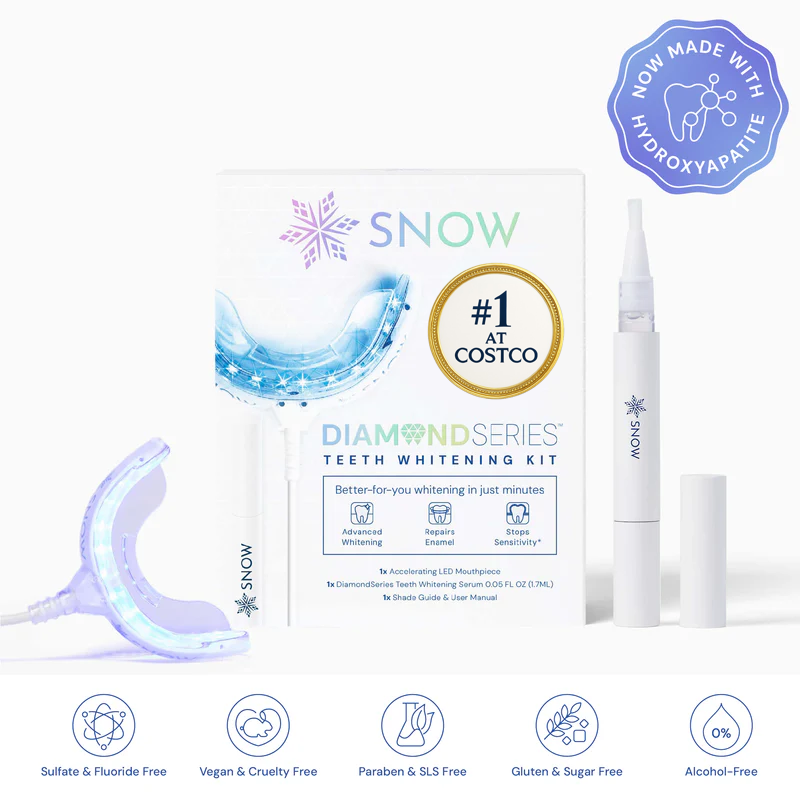
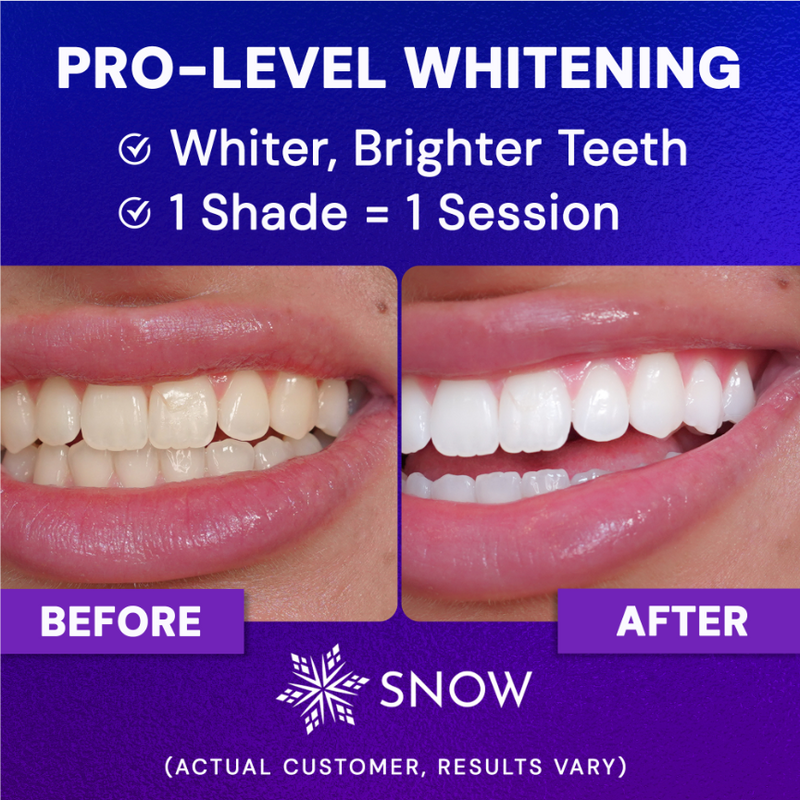
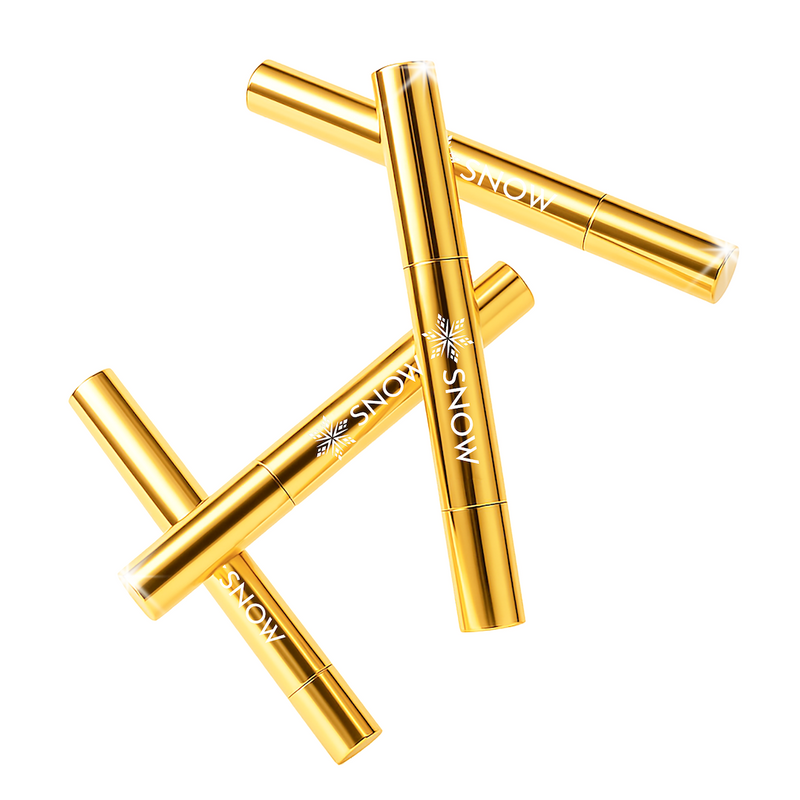
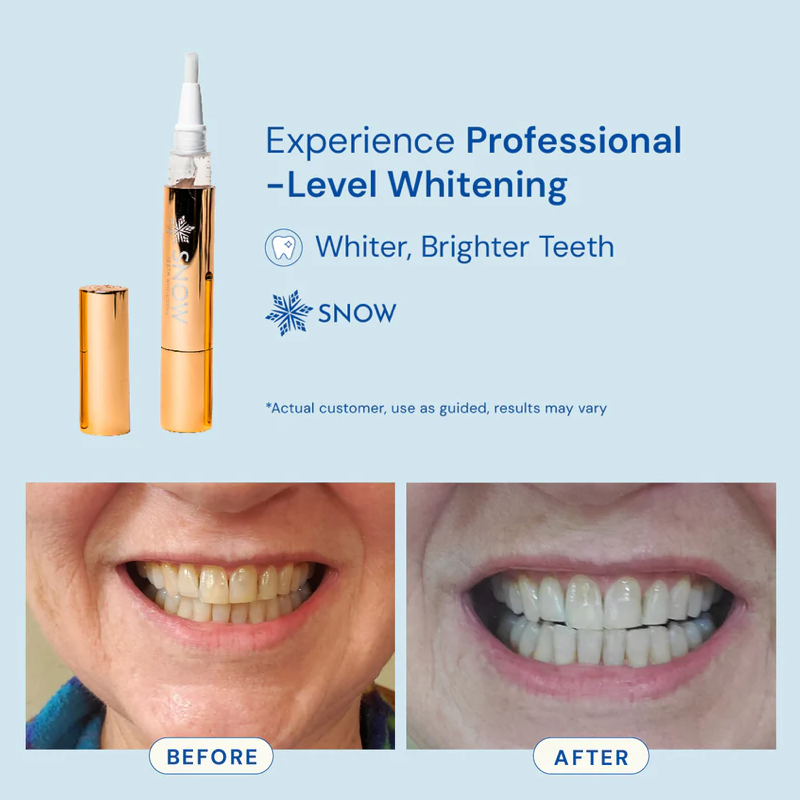
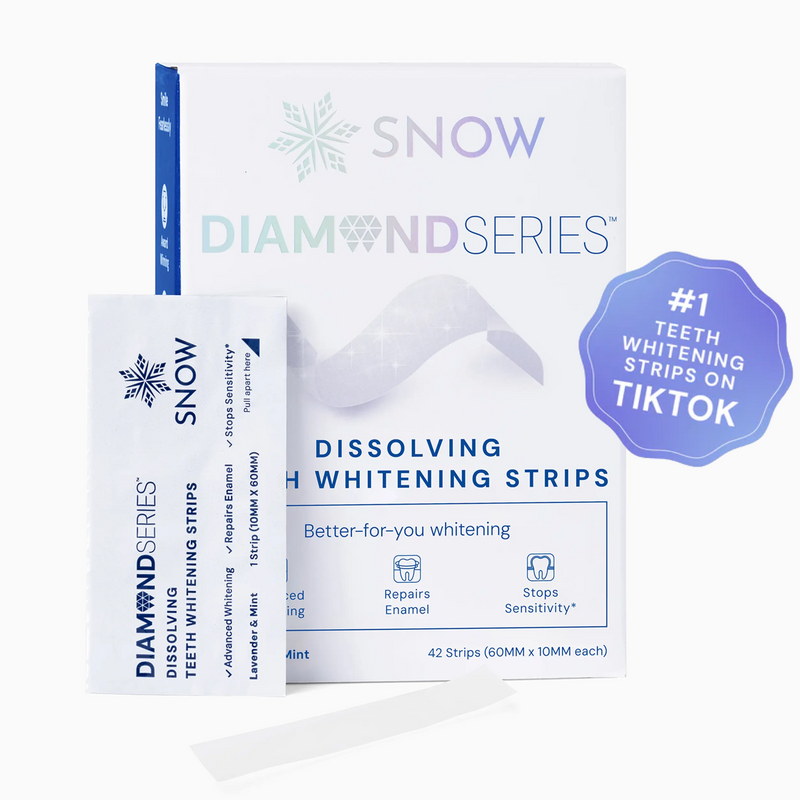
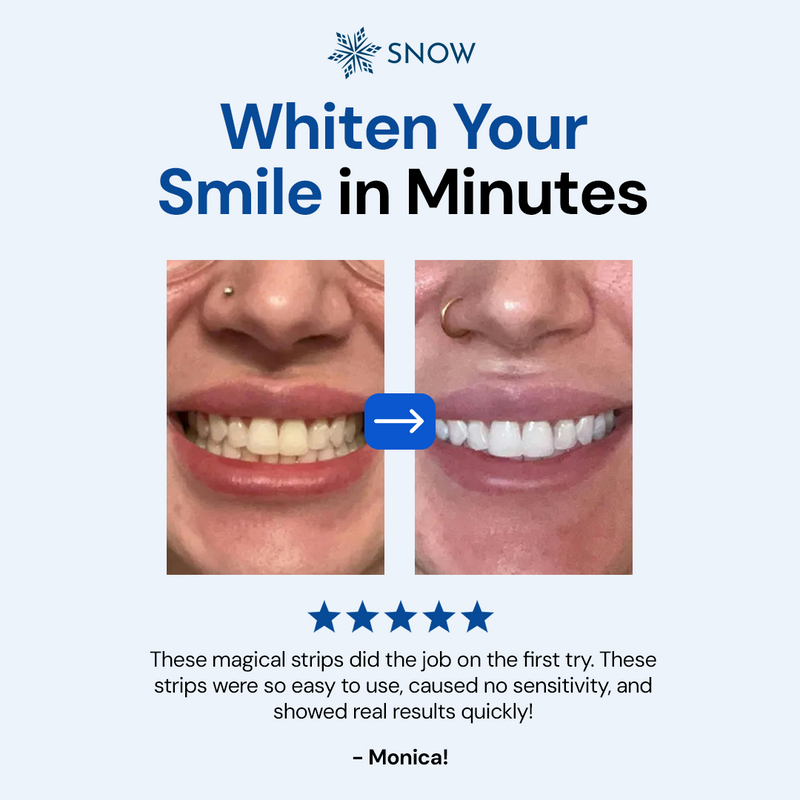
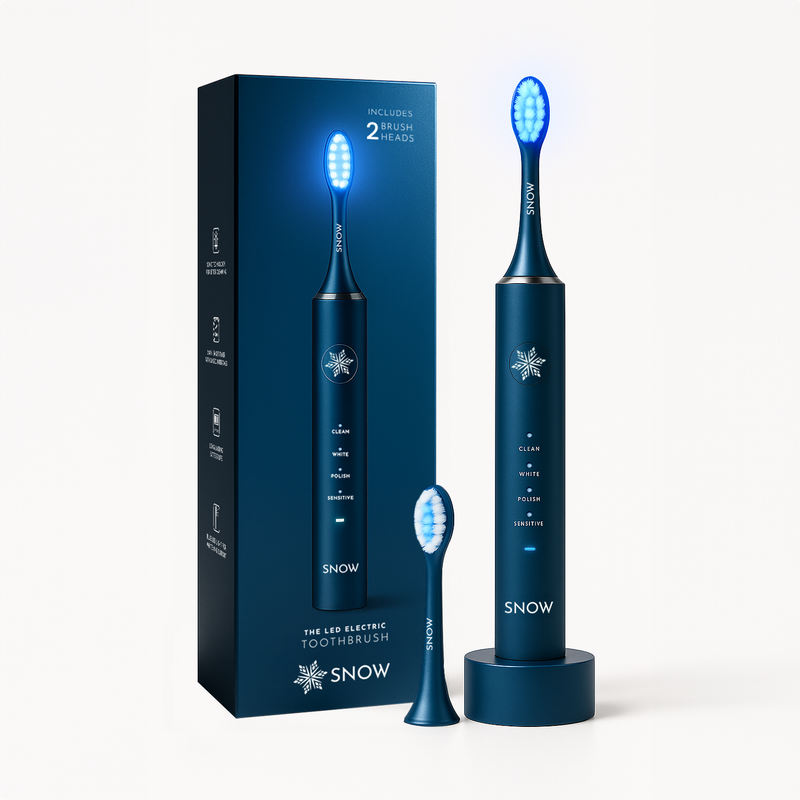

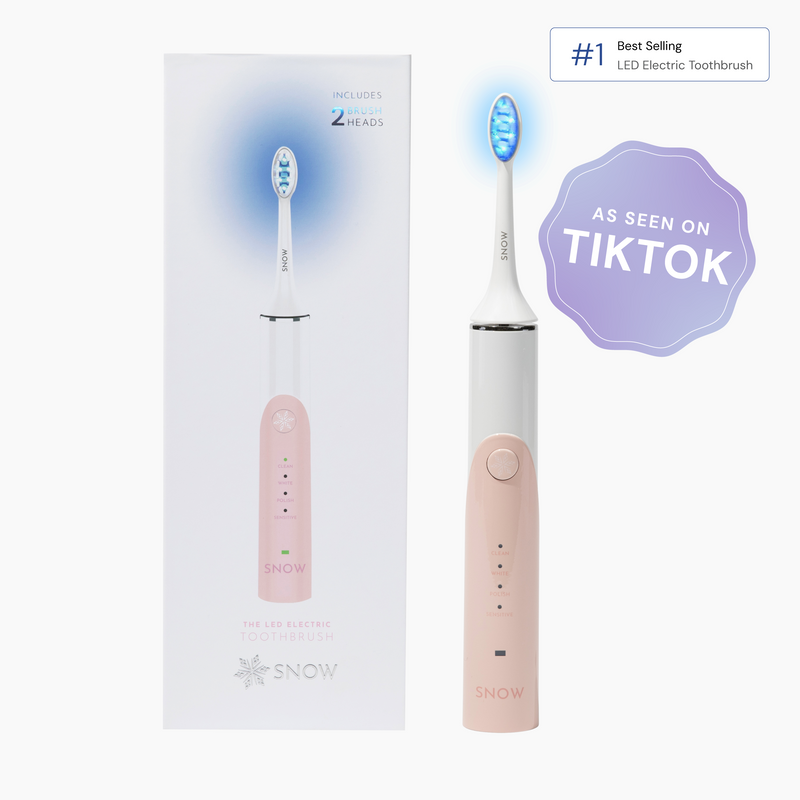
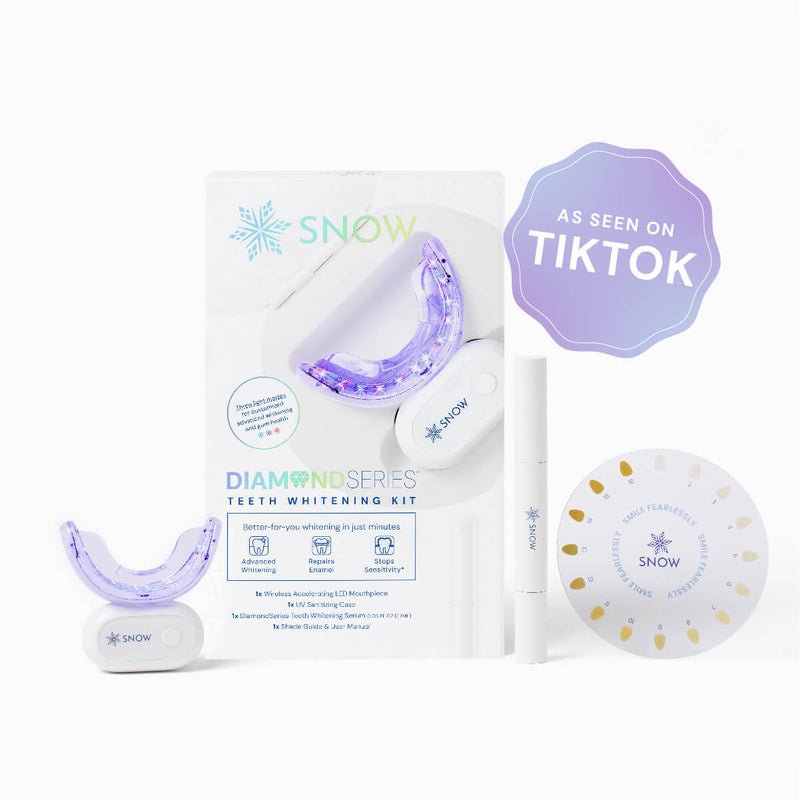
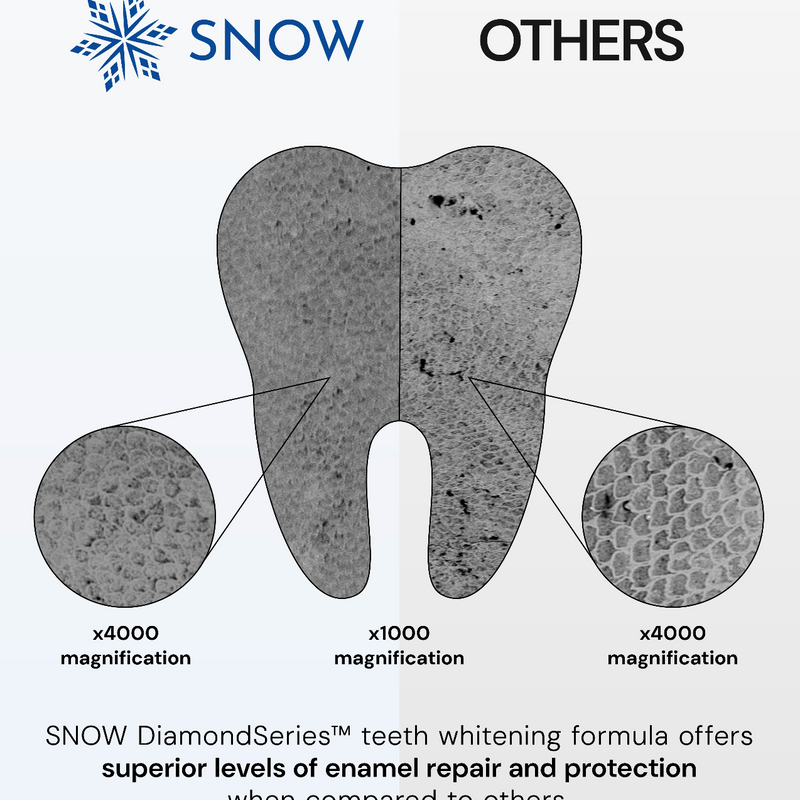
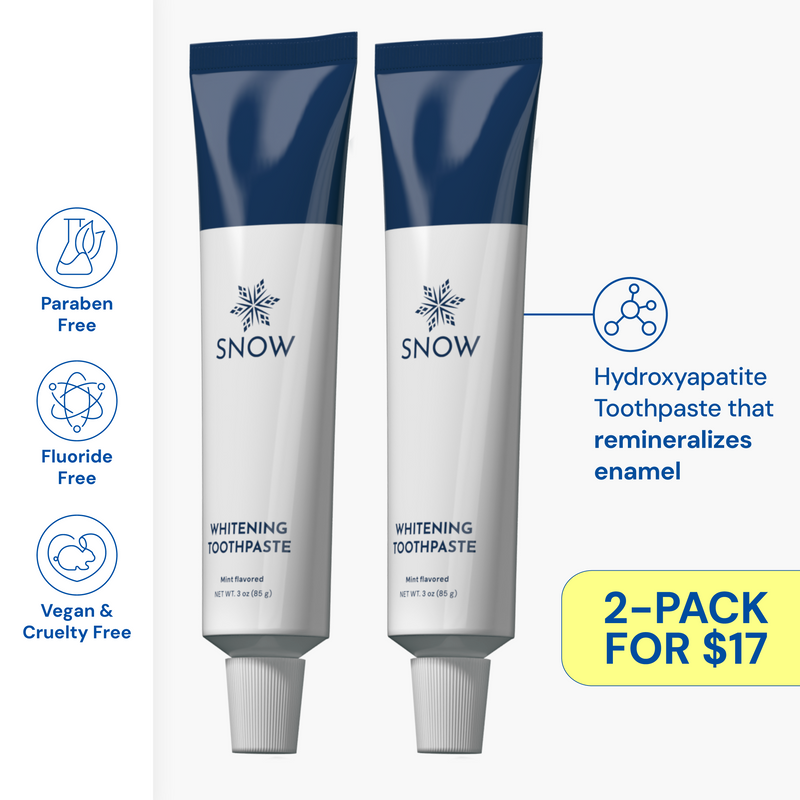
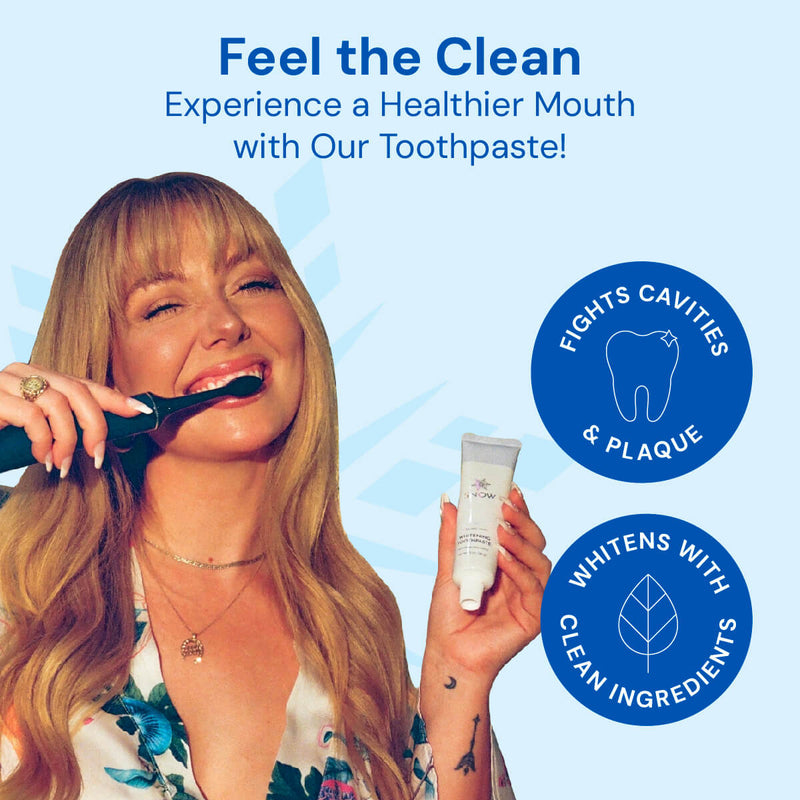
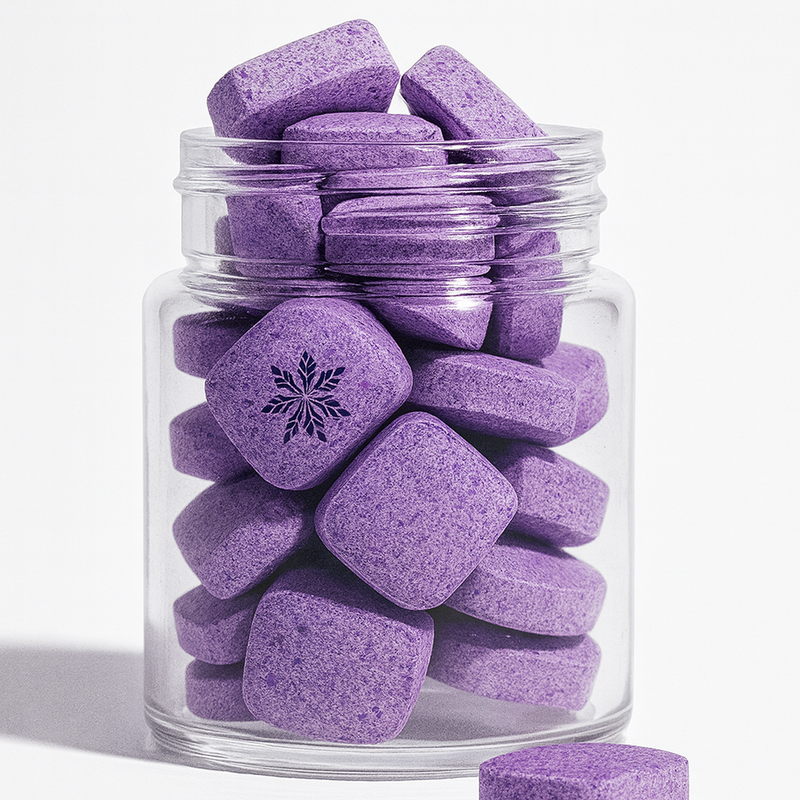

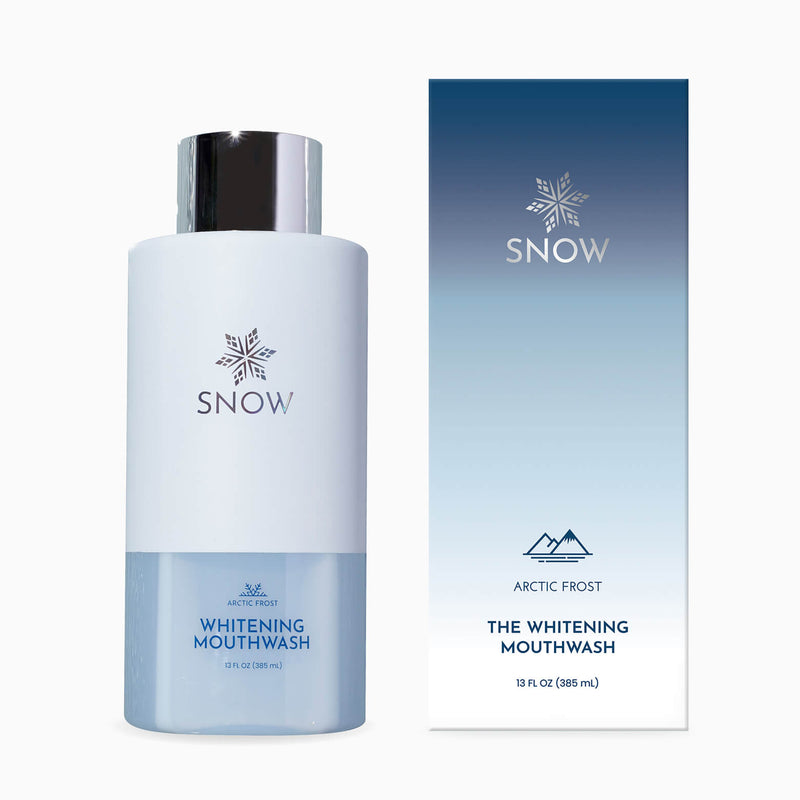
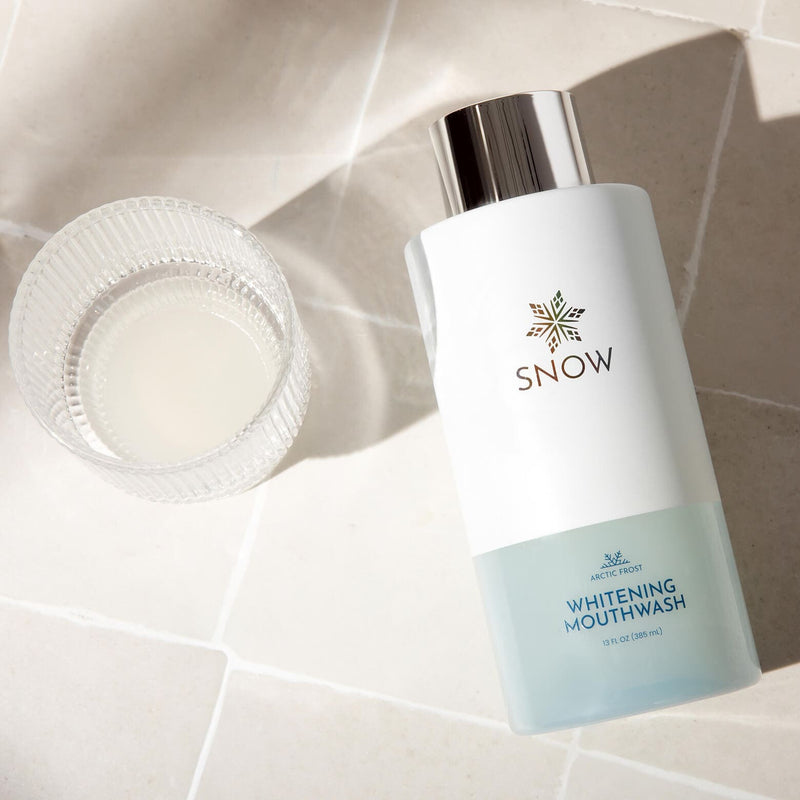

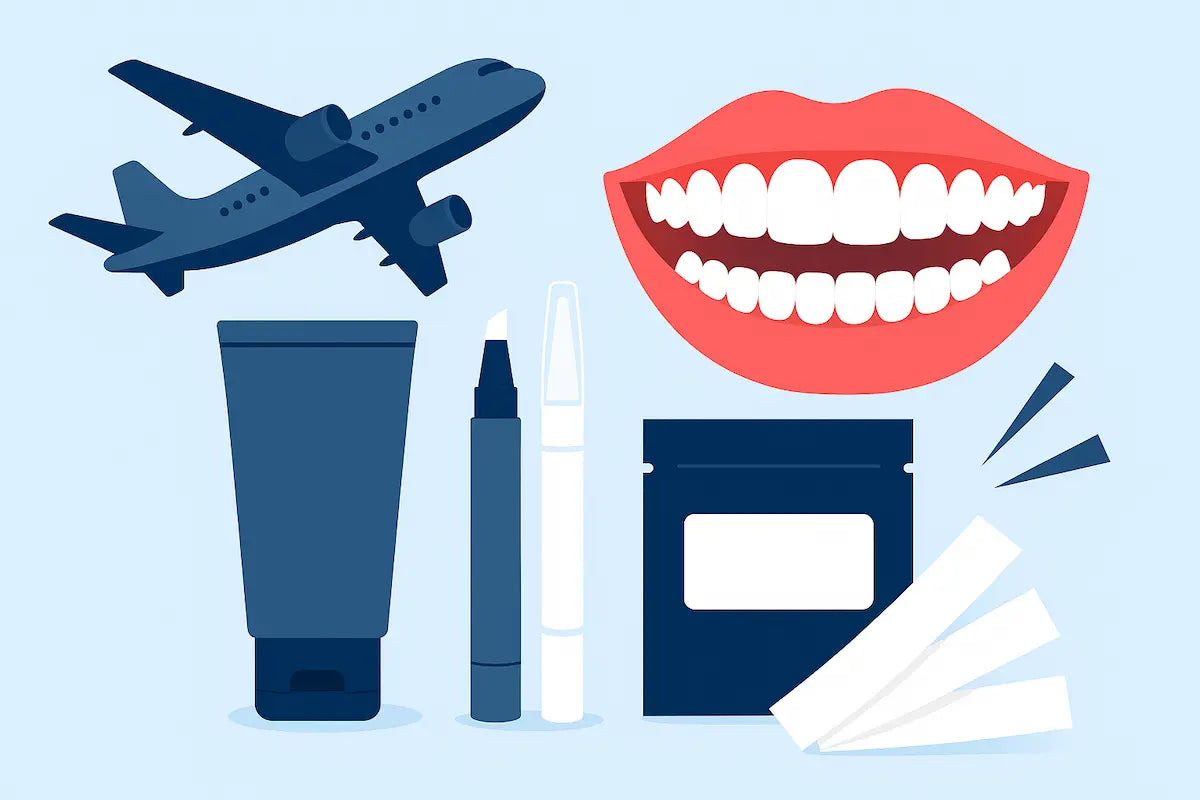
![The 7 Best Dissolving Teeth Whitening Strips of 2025 [Tested & Reviewed]](http://www.trysnow.com/cdn/shop/articles/Best_Dissolving_Whitening_Strips_f255d438-ec16-4864-88ee-a490b9b5c865.webp?v=1761235799)
